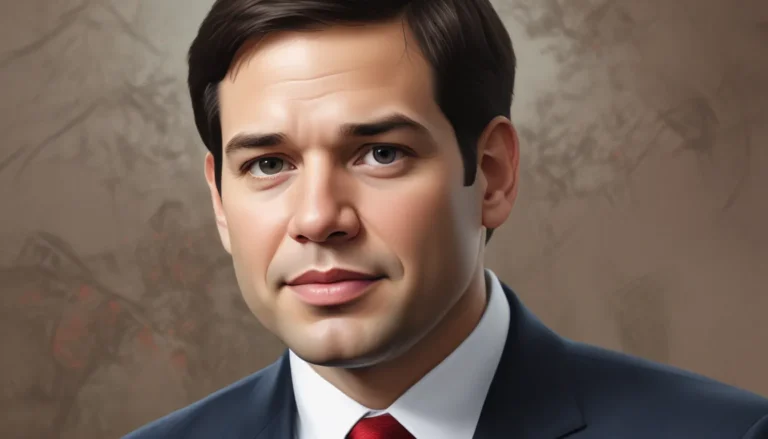The images in our articles may not match the content exactly. They are used to grab your attention, not to show the exact details in the text. The images complement the text but do not replace it.
Are you curious about the lesser-known figures in American history? Look no further than Millard Fillmore, the 13th President of the United States. While Fillmore may not be as widely recognized as some of his predecessors, his life and presidency are filled with intriguing anecdotes and pivotal moments. From his unconventional path to the White House to his lasting impact on American society, Fillmore’s story is a captivating journey through a turbulent time in U.S. history. Join us as we uncover the quirky, unexpected, and downright interesting fun facts about Millard Fillmore.
The Life and Presidency of Millard Fillmore
Millard Fillmore assumed the presidency in 1850 after the untimely death of Zachary Taylor. His term in office, from 1850 to 1853, was marked by intense division within the nation, particularly over the issue of slavery. Despite the challenges he faced, Fillmore’s presidency played a significant role in shaping the course of American history during a critical period.
Early Beginnings and Rise to Power
Fillmore’s journey to the White House was far from conventional. Born in a log cabin in the Finger Lakes region of New York in 1800, Fillmore’s humble beginnings shaped his character and ambition. Largely self-educated, Fillmore worked as a lawyer after apprenticing in the field, showcasing his resourcefulness and determination.
- Firsts in Fillmore’s Life: Fillmore was the first president to have a stepmother, highlighting a unique family dynamic in the presidential lineage.
Legacy of Presidential Policies
Upon assuming the presidency, Fillmore was faced with a deeply divided nation grappling with the issue of slavery. His administration played a pivotal role in passing the Compromise of 1850, a series of laws aimed at easing tensions between slave and free states. One of the most contentious aspects of this compromise was the Fugitive Slave Act, which mandated the return of escaped slaves to their owners.
Personal Life and Interests
In addition to his political career, Fillmore’s personal life was equally noteworthy. He married Abigail Powers in 1826, and together they had two children. Abigail’s influence on Fillmore was profound, fostering his love for reading and learning. In fact, Fillmore installed the first library in the White House, reflecting his commitment to education and knowledge.
Post-Presidency and Lasting Impact
After his term in office, Fillmore remained active in public life and politics, albeit without regaining the prominence he once held. His run for the presidency in 1856 as a candidate for the Know Nothing Party was unsuccessful, marking the end of his political career. Fillmore’s presidency as the last Whig president paved the way for the emergence of the Republican Party in American politics.
Unique Facts and Anecdotes About Millard Fillmore
While Fillmore’s legacy may be mixed, his presidency and personal quirks offer a wealth of interesting facts that set him apart from other American leaders.
- Bathtub Innovation: Fillmore was the first president to have a bathtub with running water in the White House, a modern convenience that marked a significant advancement in the presidential residence.
- Library Legacy: Fillmore helped establish the White House’s first permanent library, showcasing his dedication to education and knowledge.
- Stove and Running Water: He was also the first president to have a stove and running water in the White House kitchen, further modernizing the residence and improving living conditions.
- Forward-Thinking Diplomacy: Fillmore sent a vice presidential candidate to Japan, demonstrating his innovative approach to international relations and diplomacy.
Fillmore’s Enduring Influence on American History
Despite the criticisms of his presidency, Fillmore’s contributions to the country, particularly in infrastructure and modernization, cannot be overlooked.
- Japan’s Opening: He played a pivotal role in opening Japan to the Western world, supporting Commodore Matthew Perry’s expedition, which eventually led to the Convention of Kanagawa.
- Educational Commitment: Fillmore’s establishment of the University at Buffalo exemplified his dedication to higher education and learning.
The Legacy of Millard Fillmore: A Unique Perspective on Leadership
While Millard Fillmore’s presidency may not be widely celebrated, his impact on American history and the presidency itself is undeniable. From his role in delaying the onset of the Civil War to his emphasis on education and modernization, Fillmore’s legacy offers a nuanced perspective on leadership during a tumultuous era. As we explore the quirks and achievements of this often-overlooked figure, we gain a deeper understanding of the diverse paths leadership can take and the lasting influence each leader can have on the fabric of history.
Embracing Knowledge and Authenticity
The commitment to delivering informative and engaging content is our guiding principle. Every fact shared on our platform is contributed by individuals like you, ensuring a diverse range of insights and information. Our dedicated team of editors upholds the highest standards of accuracy and authenticity, guaranteeing that the facts we present are not only fascinating but also credible. Trust in our dedication to quality and authenticity as you embark on a journey of exploration and discovery with us.






